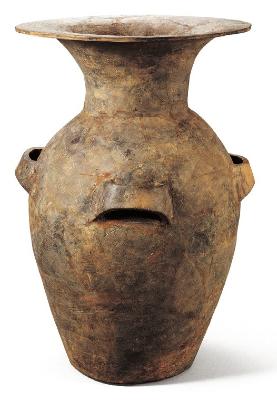- Koguryo and Balhae
- Korea-China History Awareness
Koguryo and Balhae
Table of Contents Open Contents
- History in Dispute
- The Northeast Project: Intent and Contrivance
- China’s Claims and Korea’s Perspective
- The Northeast Project: Impact and Response
- Details of the Northeast Project and its Research Results
- Northeast Project Reference List
Koguryo: Chinese History or Korean History?
- ▶ Koguryo is a part of Chinese history, because the majority of Koguryo refugees became Chinese.
- ▶ Historical inheritance is assessed not by the number of people, but the line of succession and the willingness to reconstruct.

▶ Flaring Neck Jar with Four HandlesKoguryo era earthenware excavated from Mongchon Toseong in 1988.

However, those who migrated to the Tang dynasty were forcibly displaced from Koguryo regardless of their will, and their numbers dwindled in China. Those who chose Silla did so based on the alliances formed through trilateral exchanges between the Three Kingdoms and retained the line of succession and the willingness to reconstruct. There were major differences in the way the Tang dynasty and Silla accepted Koguryo refugees. The Tang dynasty forcibly moved Koguryo refugees to prevent the revival of Koguryo. On the other hand, Silla accepted the refugees, established the Kingdom of Bodeok , and subsequently unified the Three Kingdoms of Korea. This indicates that Silla succeeded Koguryo and Baekje history. This line of Koguryo succession has continued through Balhae, the Later Three Kingdoms of Korea, and Goryeo, to the modern-day Korea.
Koguryo's Affiliation with Korean History
• Koguryo revivalist activities
• The existence of the Kingdom of Bodeok
• Silla's emphasis on unifying the Three Kingdoms of Korea
• The existence Balhae, Post-Koguryo, and Goryeo advocating lines of Koguryo succession
• The existence of Korean historical archives that correlate Koguryo, Baekje, and Silla
※ The History of the Three Kingdoms, Samguk Yusa, Songs of Emperors and Kings, and Collected Works of Premier Yi of Goryeo are the most compelling evidence that Koguryo history is a part of Korean history.
Kingdom of Bodeok
Also known as Post-Koguryo State, this Kingdom was established by Anseung in 674 in the Iksan region of North Jeolla Province. It was absorbed into Silla in 683.
닫기










